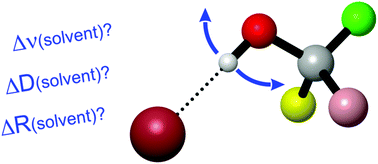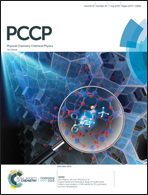Solvation and self-aggregation of chiral alcohols: how hydrogen bonding affects their VCD spectral signatures†
Abstract
In infrared spectra, intermolecular hydrogen bonds give rise to band shifts of OH-stretching vibrations and intensity enhancements of the hydrogen bonded OH-stretching vibration. The fingerprint region of IR spectra is often not considered in the analysis of hydrogen bonds as the effects are rather weak and often masked by other overlapping vibrational modes. For VCD spectra, however, the fingerprint region is the most important spectral range as it typically contains the strongest and most characteristic VCD patterns. As solute–solvent interactions might significantly alter the observed VCD spectral signatures, it is therefore important to understand which vibrational modes are affected by a hydrogen bond to the solvent and how this solute–solvent interaction is best modeled in the theoretical prediction of IR and VCD spectra. For this study, four structurally related primary and secondary chiral alcohols serve as model compounds for our investigations on the effect of solvation of the OH-group in dimethylsulfoxide-d6 and acetonitrile-d3 and of its self-aggregation in chloroform-d1. The analysis of the experimental and computational data allows us to provide first benchmarked guidelines for explicit consideration of solvent molecules in DFT-based spectra calculations of chiral alcohols. In the typical concentration range for VCD measurements, self-aggregation of secondary alcohols is found to be partially negligible, while explicit solvation with DMSO-d6 and ACN-d3 is almost indispensible.

- This article is part of the themed collection: 2019 PCCP HOT Articles


 Please wait while we load your content...
Please wait while we load your content...